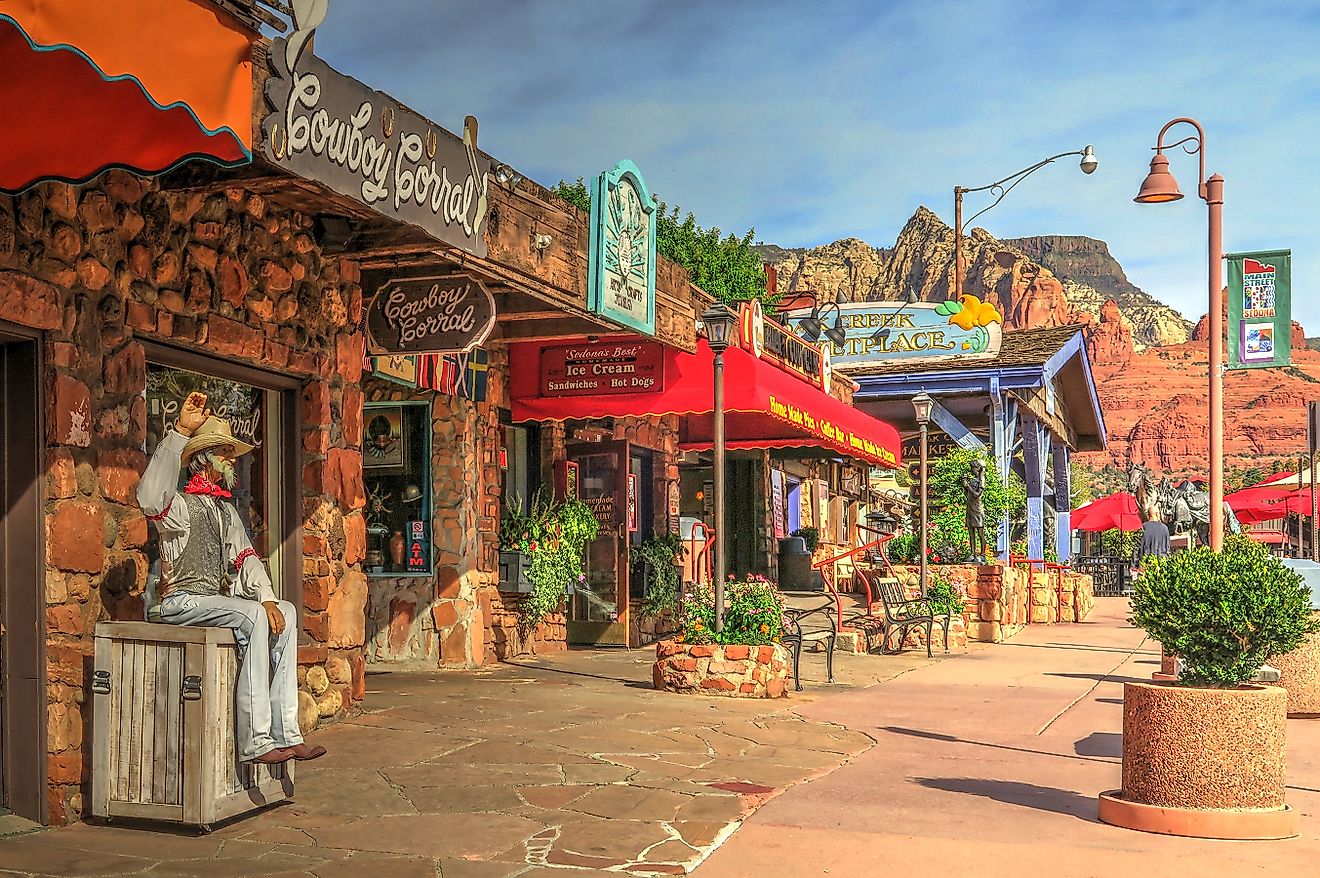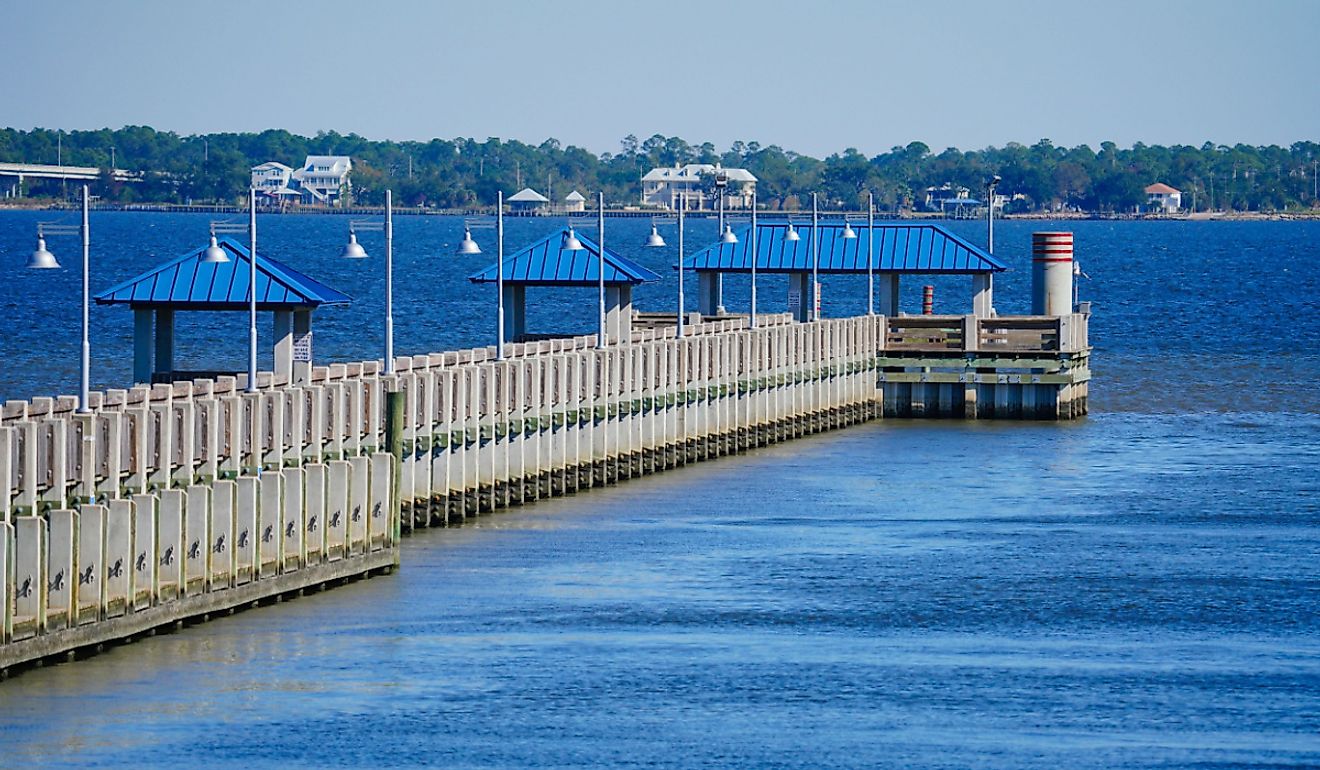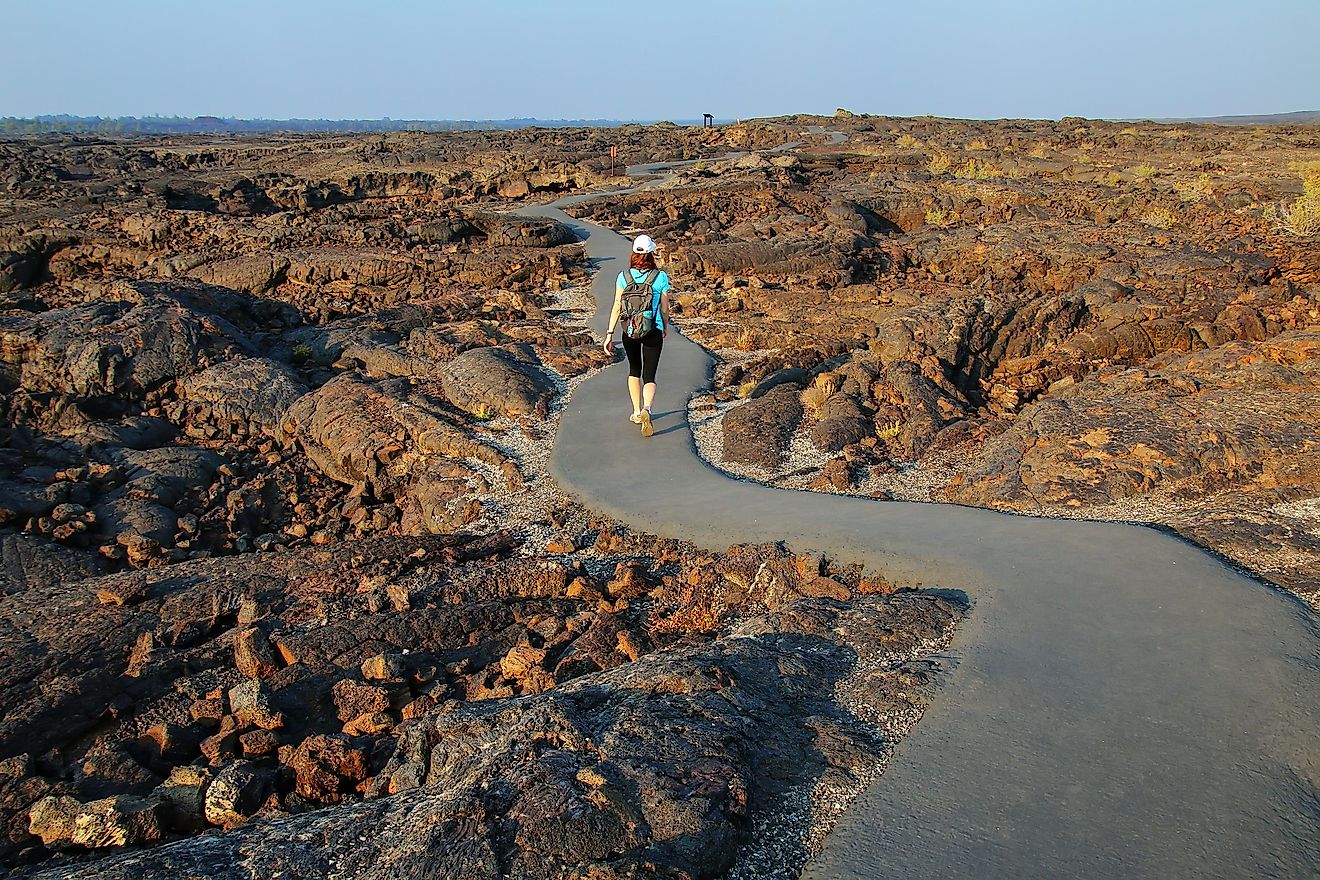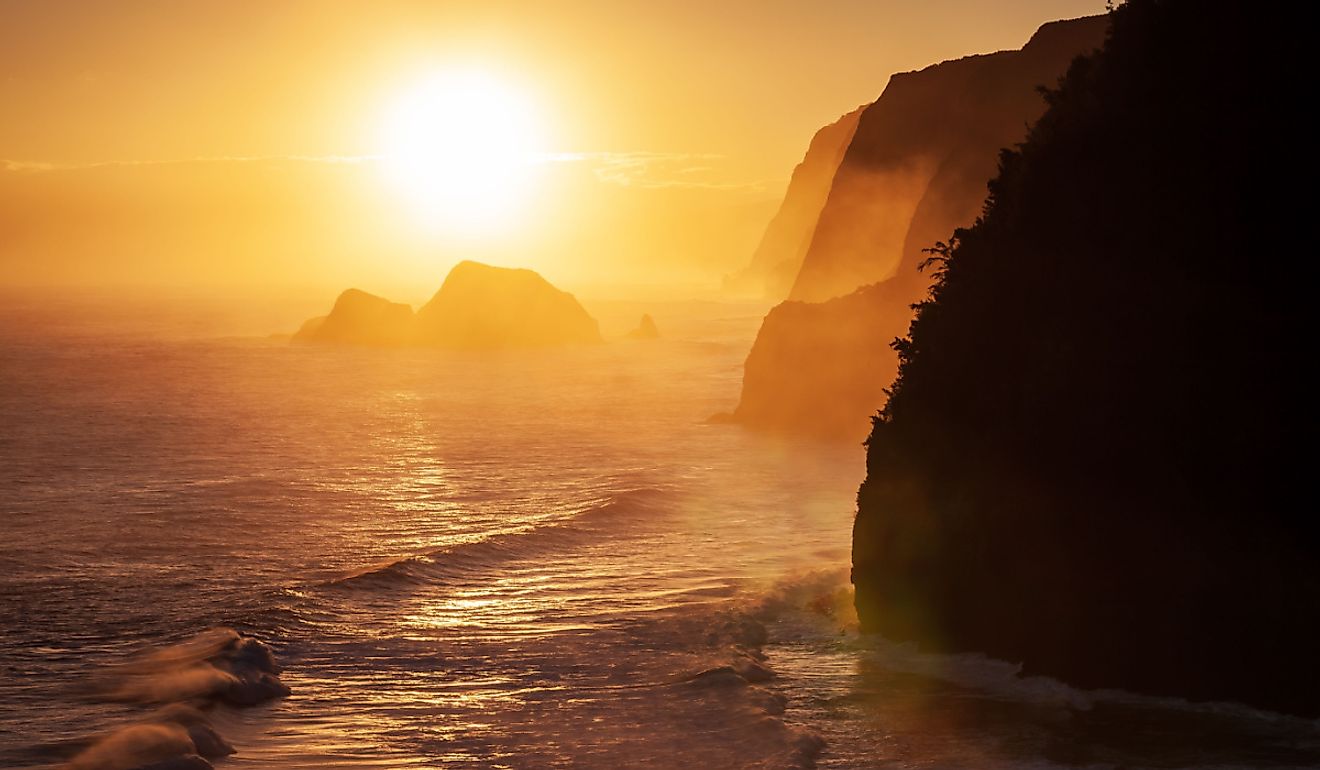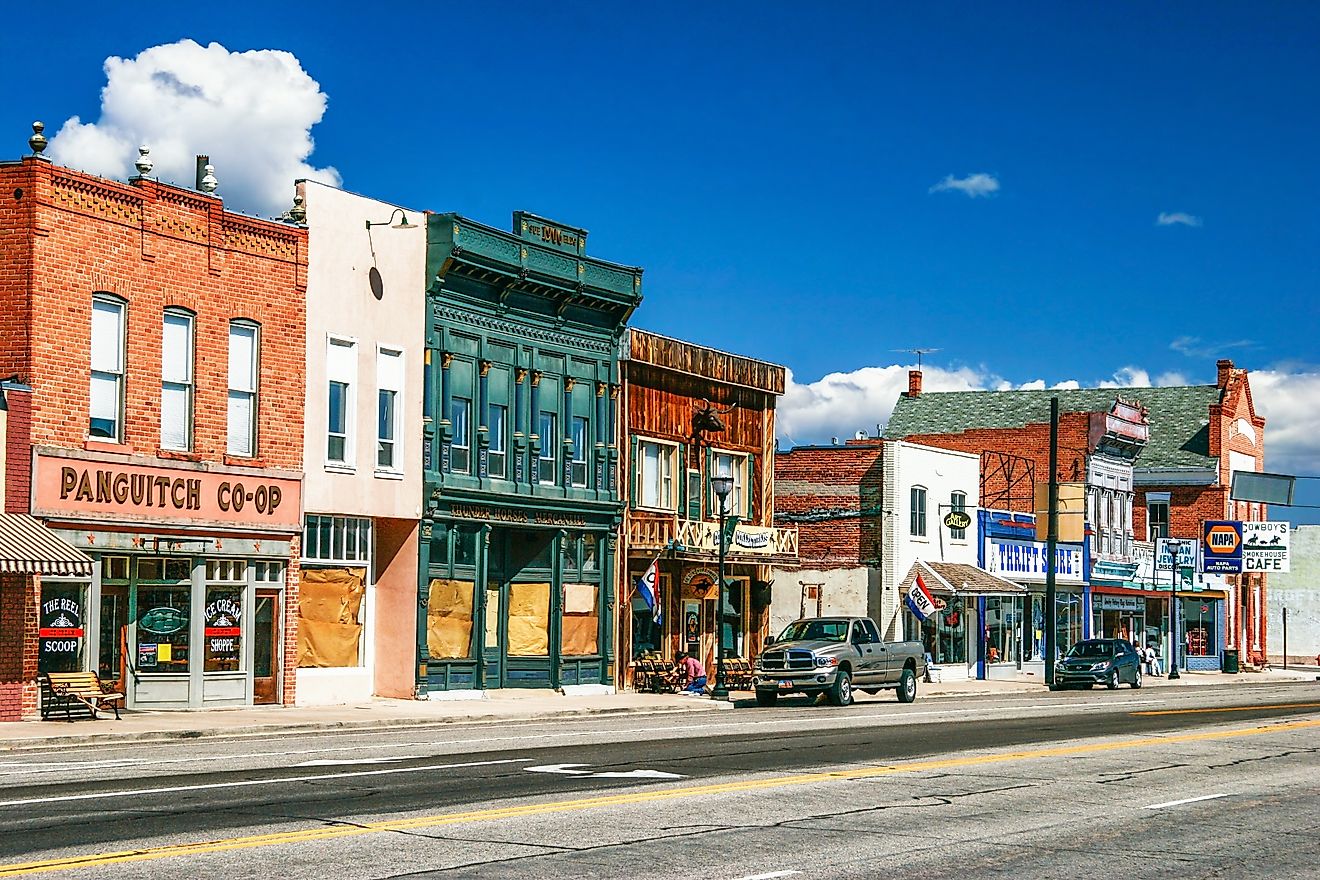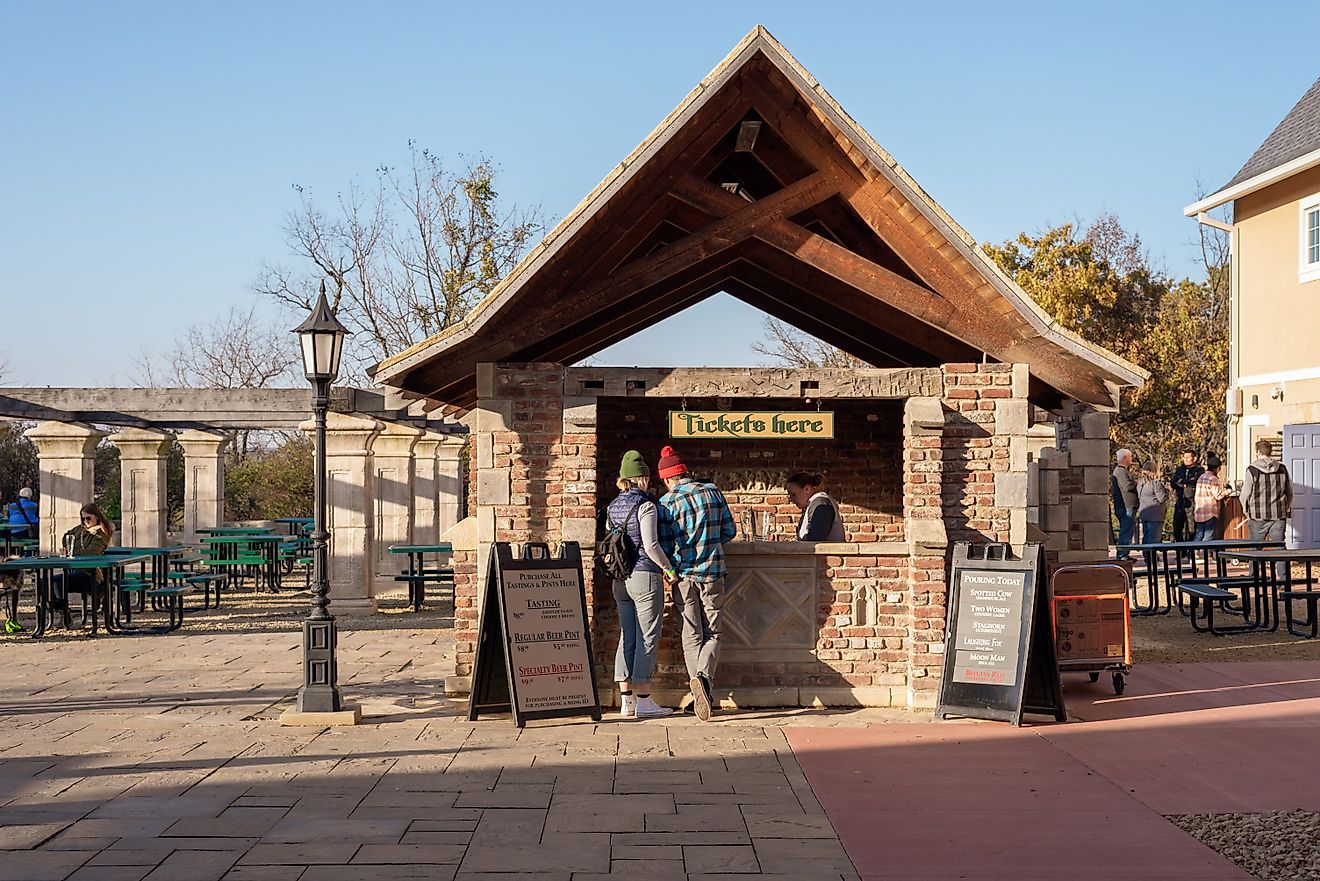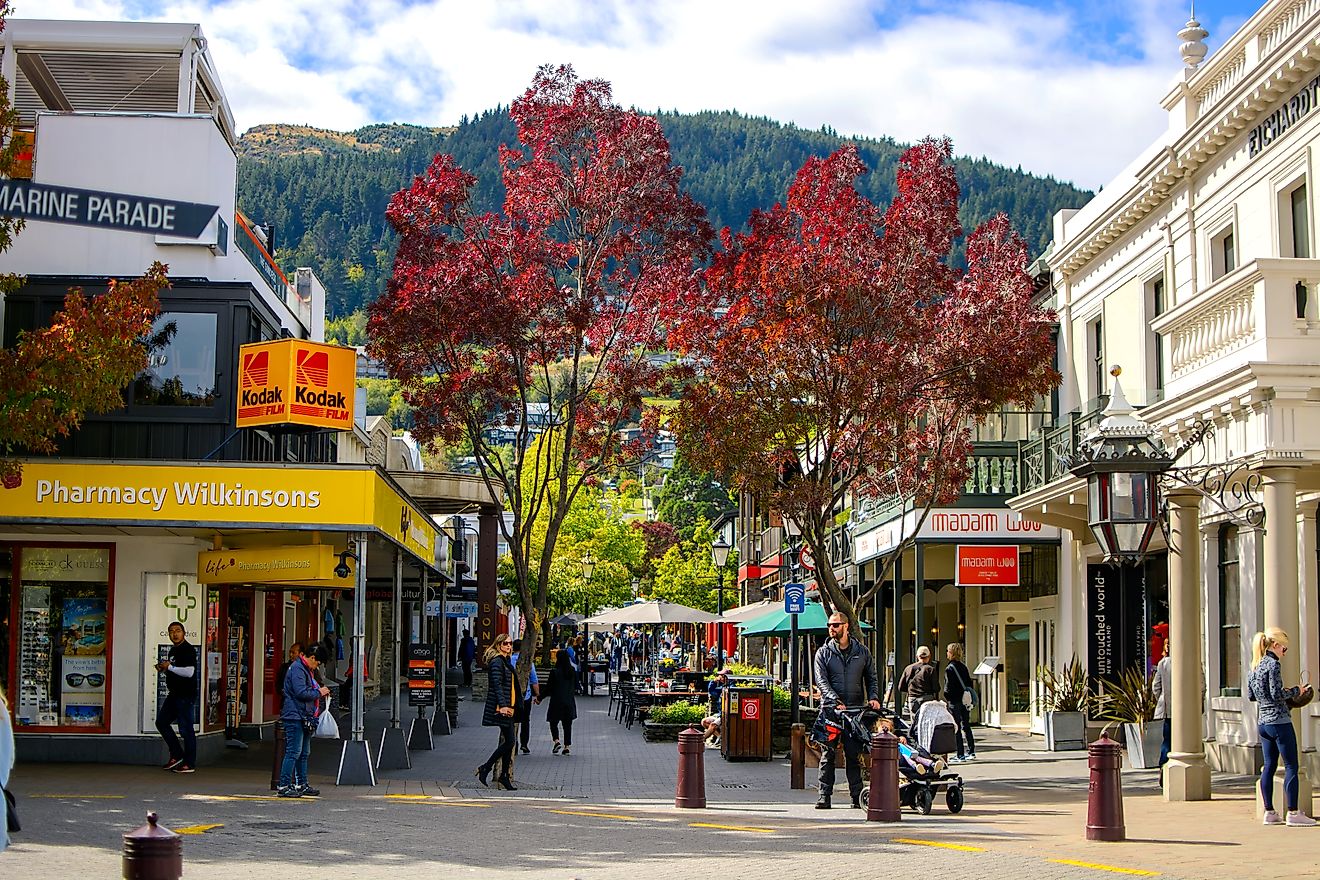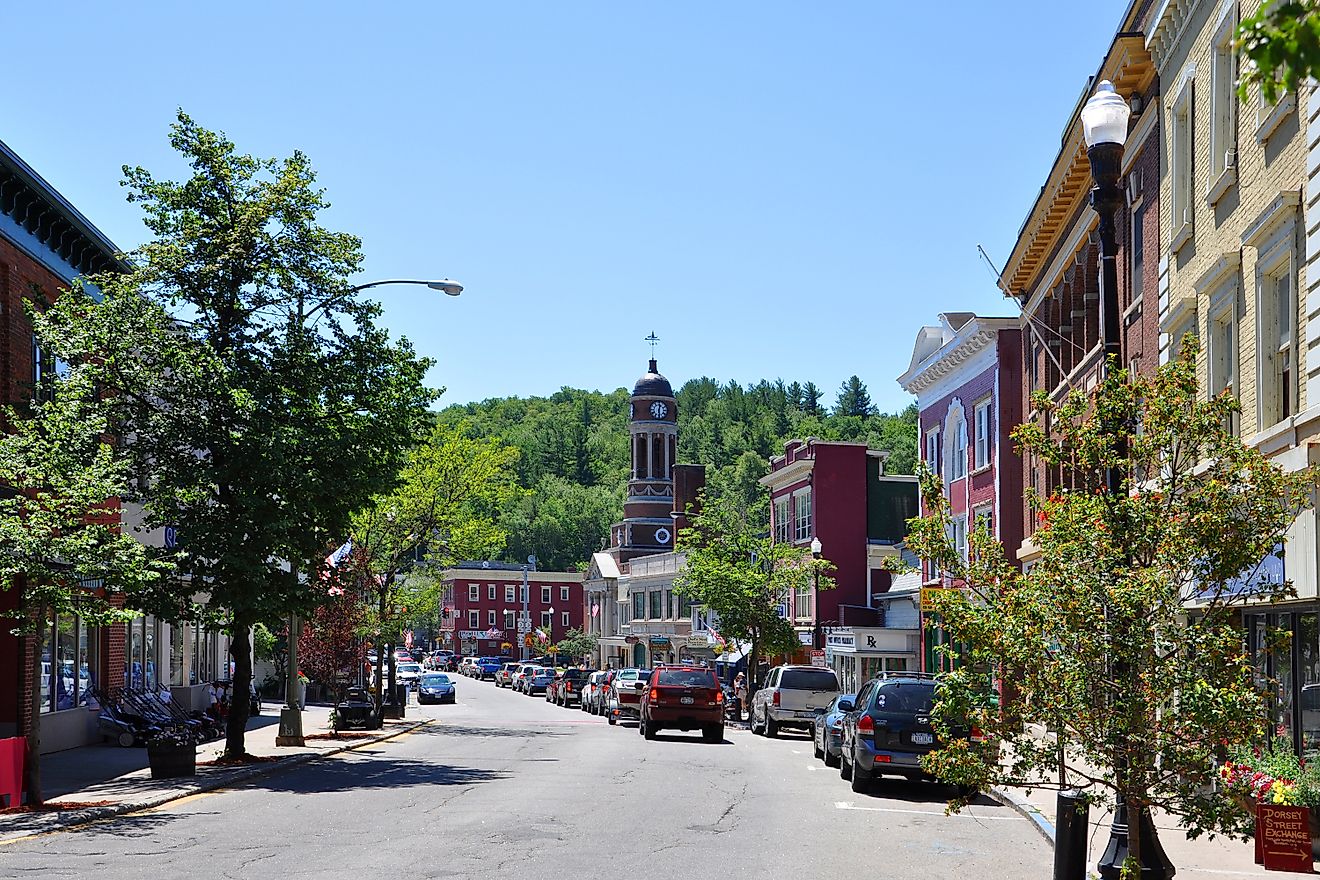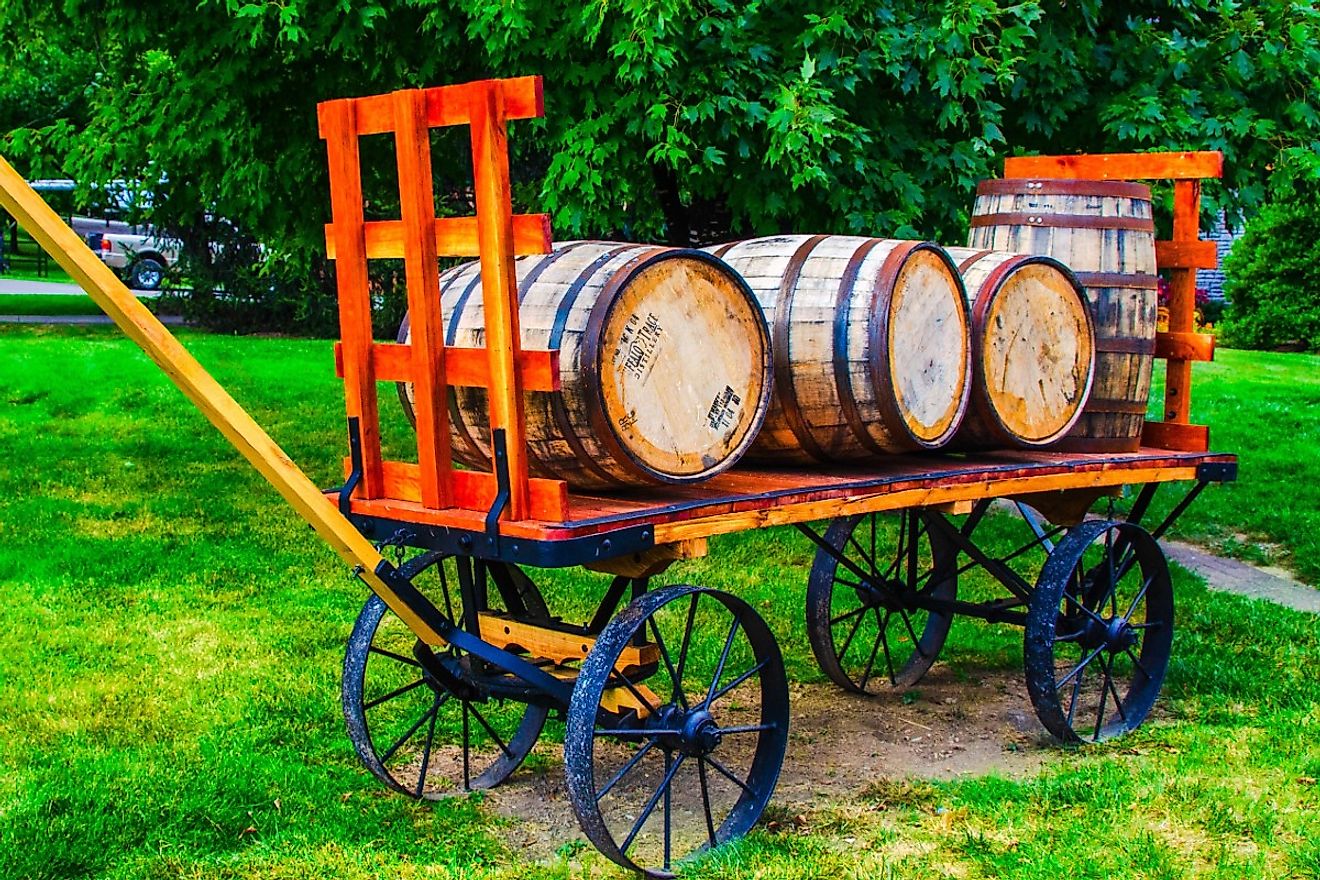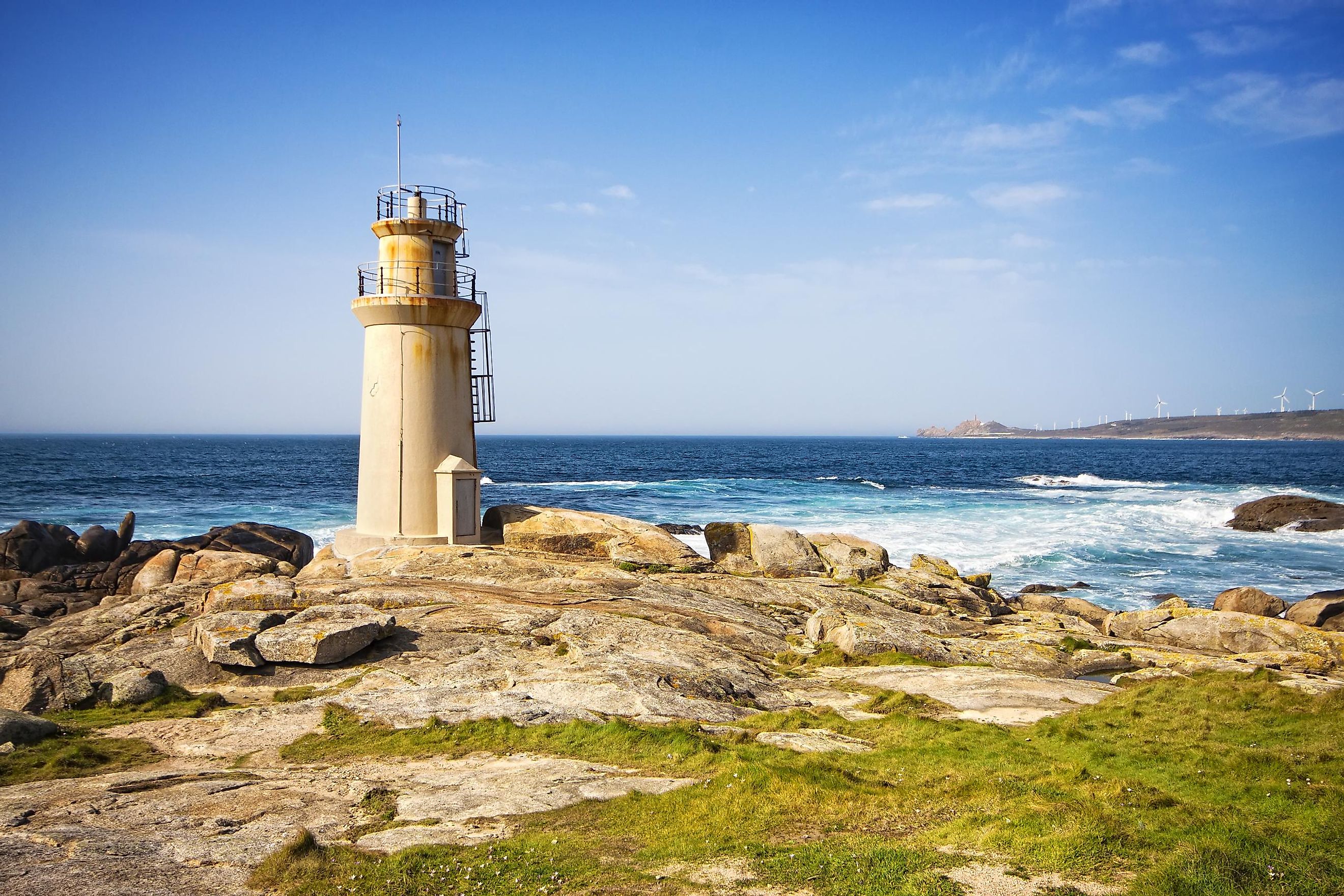
Muxía, Spain
Muxía (pronounced moo-SHE-ah) is a small fishing village on Spain's Northwest coast. For some pilgrims walking the Camino de Santiago, the crashing waves of the Atlantic Ocean and spiritually-charged sunset over what was once thought to be the end of the world, mark the ultimate completion of their journey. Here, ashes, scallop shells, and final prayers are cast into the capricious waters that are thought to have once brought Saint James (one of Jesus' twelve Apostles) and the Virgin Mary to the shores of the Celtic (Gallaeci)-occupied territory. The legend of James the Greater that ignited the millenary practice of marching to Santiago (where his remains are now thought to be held) is also instrumental to the history, development, and revival of Muxía. This humble community of around 5,000 residents (as of recent estimates), continues to welcome backpackers from Santiago, as well as other tourists seeking the wild beaches, the delicious daily catches of this active fishing port, and the utter tranquility of rural Gallicia.
Geography Of Muxía

Muxía sits on one of the westernmost points of the province of A Coruña, which is the northwesternmost of four provinces within the autonomous community of Galicia – itself the Northwesternmost of the 17 such political subregions in Spain. Muxía is also part of the comarca of Fisterra/Finisterre (Latin for the "End of the World"), and was founded close to the midway point of what would become known as the Costa da Morte (a Galician term meaning "Coast of Death"), on a paradoxically-beautiful peninsula extending towards the North Atlantic Ocean.
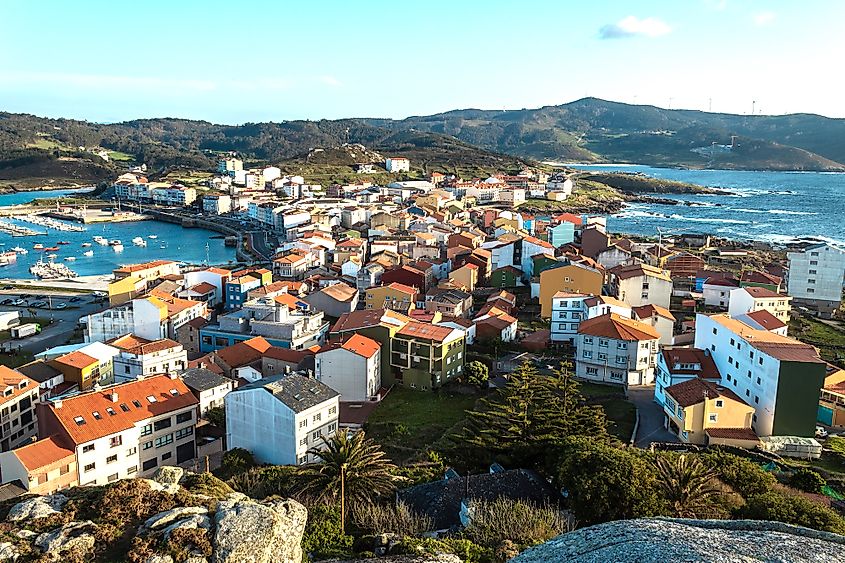
The sister town, and fellow Camino de Santiago coastal endpoint, Fisterra/Cape Finisterre, awaits 29 kilometers/18 miles to the South. The provincial capital, also called A Coruña, resides approximately 93 kilometers/58 miles to the Northeast, while the Galician capital of Santiago de Compostela (i.e., the most-common of the three Camino finish lines) is about a 74-kilometer/46-mile drive (or, via the Camino, an 86-kilometer/53-mile walk). Speaking of journeys by foot, Muxía is a key stop along the 200-kilometer/120-mile Camino de los Faros (Way of the Lighthouses), which runs from Malpica to Finisterre.
The closest international airport can be found in Santiago de Compostela. Those without their own vehicle can take advantage of the regular buses that go to and from the holy city. Because of Muxía's coastal and relatively-Northern position, it experiences temperate summers, and chilly, wet winters. The rainy season (October through to the end of January) brings a marked drop in tourists, and therefore, many of the restaurants and hotels close down until Spring.
The History And Appeal Of Muxía
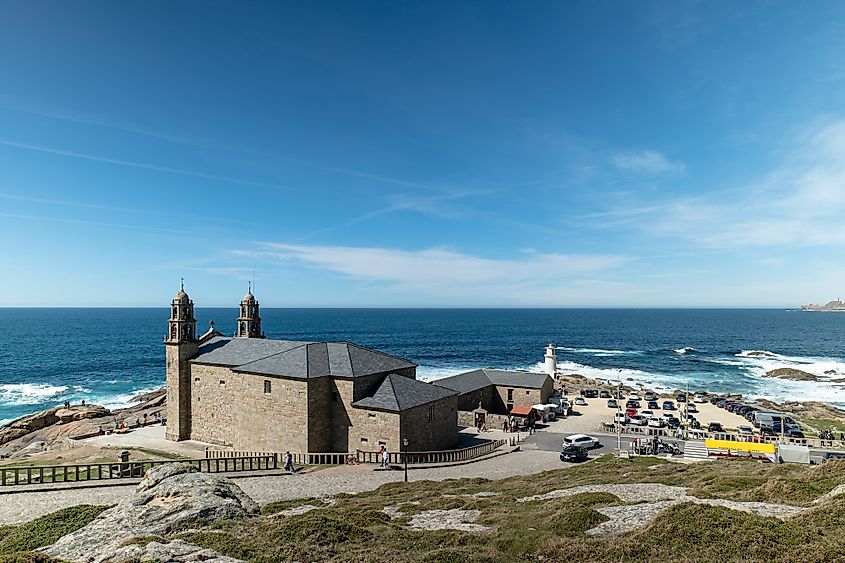
Muxía's story is a mix of tentative, corroborated, and fanciful tales. Some of the earliest known settlers of the Northwestern Iberian Peninsula were the Celtic tribes – specifically, the Neri people. On the edge of the known world, they practiced an integral part of their animist/pagan beliefs: the worship of the sun. A shrine once stood at the site of the Santuario da Virxe da Barca, in Muxía, and the more elaborate Ara Solis temple, stood in reverence to the setting (perhaps, dying) sun from the further West location of nearby Cape Finisterre. The Romans reportedly used this temple as well, as they moved in to predominantly-conquer the Celts towards the beginning of the Common Era.
It is said that after the crucifixion of Christ, in 30-33 AD (or CE), the known kingdoms were divided amongst his twelve Apostles, who were tasked with spreading the Word. Iberia fell to Saint James. It is said that he himself destroyed the works of the Celtic tribes, as he struggled to convert them to Christianity. Whether or not this is true, the temples and shrines were eventually completely wiped out as Christianity swept through the region during the Reconquista (though Galicia resisted longer than the surrounding kingdoms). The only remaining evidence of the creations of the Celtic animists exist in early Roman writings.
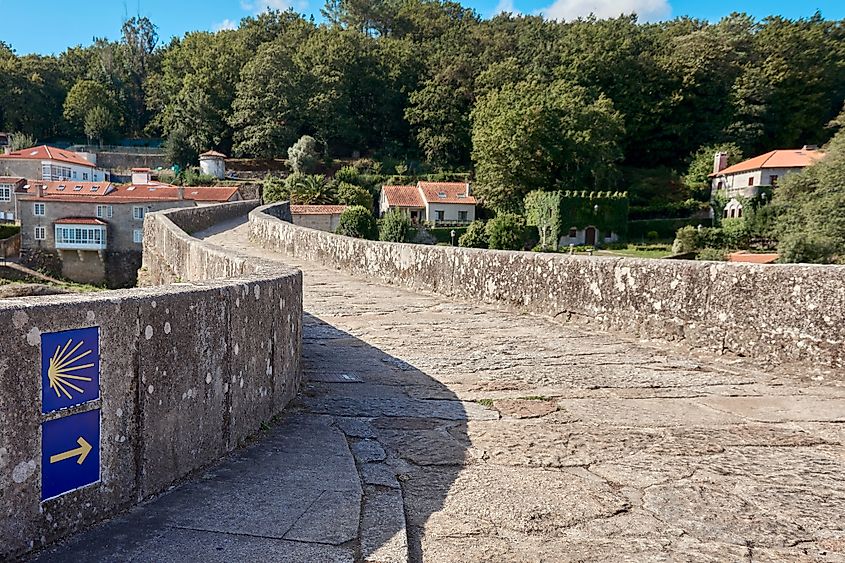
Legend has it that the Virgin Mary also came to the shores of Muxía, on a boat made of stone, in support of Saint James' mission, and then to usher him back to the Holy Land. Upon returning to Jerusalem, the Apostle (and eventual patron saint of Spain) was beheaded. His followers put his remains into a (again) stone boat and cast him off towards the furthest reaches of his proselytizing. Guided by a guardian angel, the boat arrived near Muxía/Finisterre, before being pulled inland by an ox and two of his followers to Iria Flavia, near present-day Santiago de Compostela.
Read More: History of the Camino de Santiago
The arrival of the Virgin Mary, and the miraculous happenings of Saint James, are palpable in today's Muxía. The Piedras del Milagro (Miracle Stones) can be found just outside of the seaside sanctuary, which also goes by the name, Nosa Señora da Barca, meaning "Our Lady of the Boat," and are said to be the remnants of the mysterious boat. The Abalar Stone represents the sail. It apparently has healing properties, and has been used to determine whether or not a person is guilty by waiting for it to tip a certain way with the winds. The Cadrís Stone is thought to be the hull of the boat. Because it happens to be in the shape of a kidney, a curious practice that some pilgrims undertake is to pass under it nine times in order to be cured of kidney problems, and other ailments of the lower back. And the Timón Stone is considered the faithful rudder. Strangely, little of the original church exists today, as it caught fire after being struck by lightning. What's even stranger, is that this happened on Christmas Day of 2013. One is tempted to draw conflicting conclusions…
The first mention of the name Muxía comes in reference to the village that was christened by the monks of the San Xiao de Moraime monastery – a Romanesque construction about 4 kilometers Southeast that can still be visited today. The original name given was Munxía-Monxes.
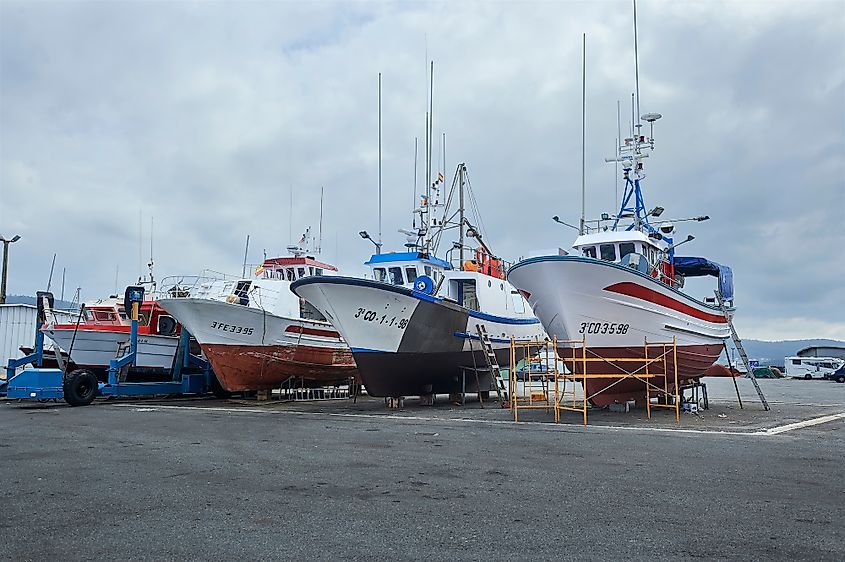
The settlement went through a turbulent time in the early 12th century. The Nomans invaded in 1105, followed shortly thereafter by the Moors. Then, in 1119, King Alfonso VII (ruler of Galicia and soon to be ruler of Castile and León) funded a repopulation strategy. By the 14th century, it was upgraded to town status, owing to the robust fishing port that had developed. This appealed to King Carlos of Castile, who purchased the town in the 16th century in order to expand his kingdom's trade with England. But Muxía was in for a few more surprises. In the early 19th century, Napoleon invaded, and completely destroyed the town.
Muxía quickly rebuilt, and grew to encapsulate Mount Corpiño. A hike up this glorified hill reveals incredible views of the cute fishing village, ocean port, and rolling, verdant terrain.
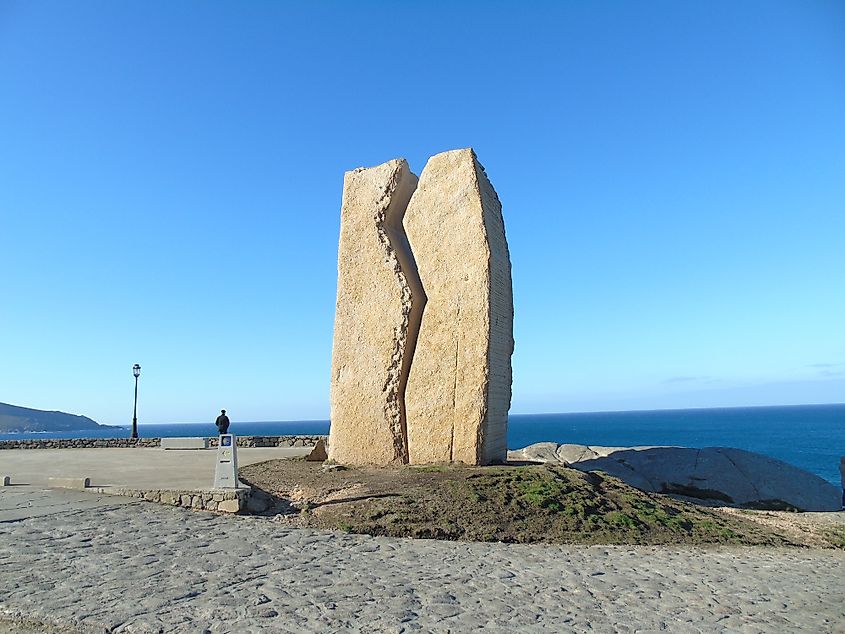
Unfortunately, the Coast of Death (which got its name from the countless shipwrecks that have occurred here since the 1500s), struck another major blow on November, 13th, 2002. The violent waters caused the MV Prestige tanker to spill at least 50,000 tonnes of oil into the Atlantic. A monument known as the A Ferida Megalith (meaning, "the wound") was erected in honor of the tens of thousands of tireless volunteers who came together to mitigate the damage. It now stands directly behind the O-Kilometer Camino de Santiago marker (a two-for-one photo-op for visitors).
The subsequent years of the new millennium have been a peaceful era for Muxía. The unpretentious beaches and freshly-caught seafood bring in the summer tourists, and introverted pilgrims can complete their journey in a magical way, here, at the true end of the line. While a small percentage of people continue on foot from Santiago, a notable boost did occur after the release of the 2010 film, The Way, whose penultimate scene glorifies Muxía. Whatever brings you to town, look forward to enjoying a soul-soothing sunset that has held spiritual significance for a multitude of cultures and religions over the centuries.

